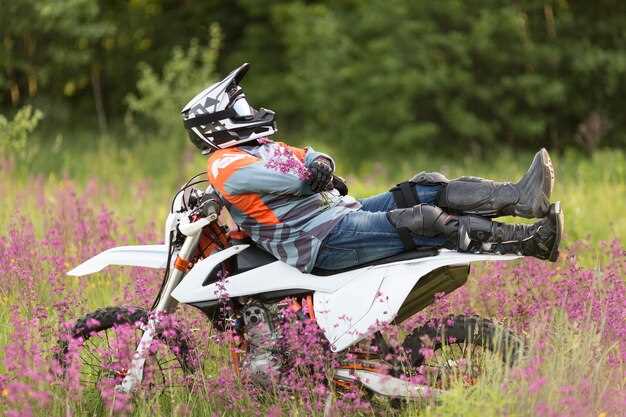

Riding a motorcycle in challenging terrains like sand and mud can be an exhilarating experience, but it also demands specific skills and techniques to ensure safety and control. In these conditions, traditional riding methods may not suffice, and riders must adapt their approach to navigate through loose surfaces effectively. Understanding the unique dynamics of sand and mud is essential for enhancing both your confidence and performance on two wheels.
Sand presents a unique set of challenges. The soft, shifting surface can cause your motorcycle to become unstable if not handled correctly. Proper throttle control and body positioning are critical, as they help maintain traction and prevent the front wheel from washing out. Riders should practice shifting their weight back to avoid digging the front wheel into the sand while steering gently to guide the bike through.
Similarly, riding in mud requires a different mindset. The slippery and unpredictable nature of mud can easily lead to loss of traction. To master this terrain, riders need to minimize abrupt movements, using smooth throttle transitions and gentle steering inputs. Maintaining a steady pace and keeping your body loose will allow the motorcycle to float over the surface, ultimately enhancing your ability to maneuver through challenging areas with resilience.
In this article, we will explore essential techniques that will empower you to conquer both sand and mud with confidence. By honing these skills, you’ll not only improve your off-road riding capabilities but also gain a deeper appreciation for the art of motorcycle riding in diverse environments.
Optimizing Body Positioning for Stability in Loose Terrain
Proper body positioning is crucial when riding a motorcycle in sand and mud. Achieving stability and control requires a combination of balance, weight distribution, and posture. Here are essential tips for optimizing your body position:
- Stand Up: When riding on loose terrain, standing on the foot pegs allows for better shock absorption. It enables your body to move with the bike, enhancing balance.
- Relax Your Knees: Keep your knees loose and slightly bent. This flexibility aids in maintaining grip on the bike and helps in absorbing bumps.
- Engage Your Core: A strong core stabilizes your upper body. It allows you to control the motorcycle more effectively, especially during unexpected movements.
- Shift Your Weight: Lean forward while accelerating and move your weight back when descending hills. This dynamic weight shifting helps maintain traction and control.
Maintain a proper grip on the handlebars. A firm but relaxed grip prevents unnecessary tension in your arms, allowing for smoother steering adjustments.
- Keep Your Head Up: Always look ahead, keeping your head up. This helps in anticipating obstacles and maintaining direction.
- Feet Position: Position your feet flat on the pegs but prepare to use them for balance. In slippery sections, using your feet to steer can provide additional control.
- Dive into Turns: When approaching turns, lean your body into the turn while maintaining a low center of gravity. This action increases stability and traction.
Practice these techniques in a controlled environment before tackling more challenging terrain. Continuous practice fosters muscle memory, making it easier to execute these positions instinctively.
Choosing the Right Tires for Improved Traction in Sand and Mud

Selecting the right tires is crucial for enhancing traction when riding through sand and mud. The type of tire can significantly impact your motorcycle’s performance in these challenging terrains. When considering tire options, it’s essential to focus on tread design, rubber composition, and tire width.
Tread design plays a key role in how well a tire grips softer surfaces. For sandy conditions, look for tires with wider, spaced knobs that can dig into the sand rather than floating on top. These tires will provide better handling and acceleration. In muddy environments, tires with deeper treads and larger gaps between knobs are preferable, as they can effectively channel mud away from the contact patch, preventing the tire from becoming clogged.
The rubber composition also affects traction. Softer compounds tend to provide better grip in loose conditions compared to harder compounds, which can slip more easily. However, softer tires may wear out faster on hard surfaces, so it’s important to find a balance based on where you will be riding most frequently.
Tire width is another important factor. Wider tires distribute weight more evenly, increasing the surface area in contact with the ground. This helps prevent sinking in soft sand or mud. However, excessively wide tires can make steering more difficult and reduce stability on hard-packed surfaces. Choose a width that complements your riding style and the specific conditions you plan to tackle.
Lastly, consider tire pressure adjustments. Lowering tire pressure can enhance traction by allowing the tire to conform more easily to the terrain, increasing the overall footprint. However, be mindful of the potential risks associated with running lower pressures, such as pinch flats and reduced maneuverability on harder surfaces.
In summary, the right tires can significantly improve your motorcycle’s traction in sand and mud. Focus on a suitable tread design, rubber composition, and tire width for optimal performance in challenging conditions, and adjust tire pressure accordingly to maximize grip and control.
Implementing Throttle Control to Navigate Slippery Conditions

Throttle control is crucial when riding in slippery conditions such as sand and mud. Proper modulation of the throttle allows riders to maintain traction and avoid losing control of the motorcycle. The key lies in applying gradual and measured inputs, rather than abrupt actions that can lead to wheel spin or sliding.
When entering a slippery section, begin by gently rolling on the throttle. This gradual increase in power minimizes the chances of overwhelming the rear tire’s grip. It is essential to assess the surface and adjust your throttle application based on the feedback from the bike. If you feel the rear tire starting to slip, reduce the throttle immediately to regain control.
Additionally, maintaining a steady speed through challenging areas can improve your stability. Consistency in throttle application, combined with smooth body positioning, helps distribute weight evenly across the motorcycle. This balance is especially important in loose terrain where unexpected bumps or dips can catch you off guard.
In muddy conditions, consider using a technique known as “feathering” the throttle. This involves applying light pressure to the throttle to keep the engine engaged while avoiding excessive acceleration. Feathering helps to maintain traction without digging the rear wheel into the mud, which can further reduce grip.
Practicing throttle control in various slippery conditions is essential for building confidence and improving your response time. Set aside time to experiment in a controlled environment, gradually increasing the difficulty as you become more comfortable. Understanding how your motorcycle reacts under different amounts of throttle will enhance your ability to navigate challenging terrain effectively.






